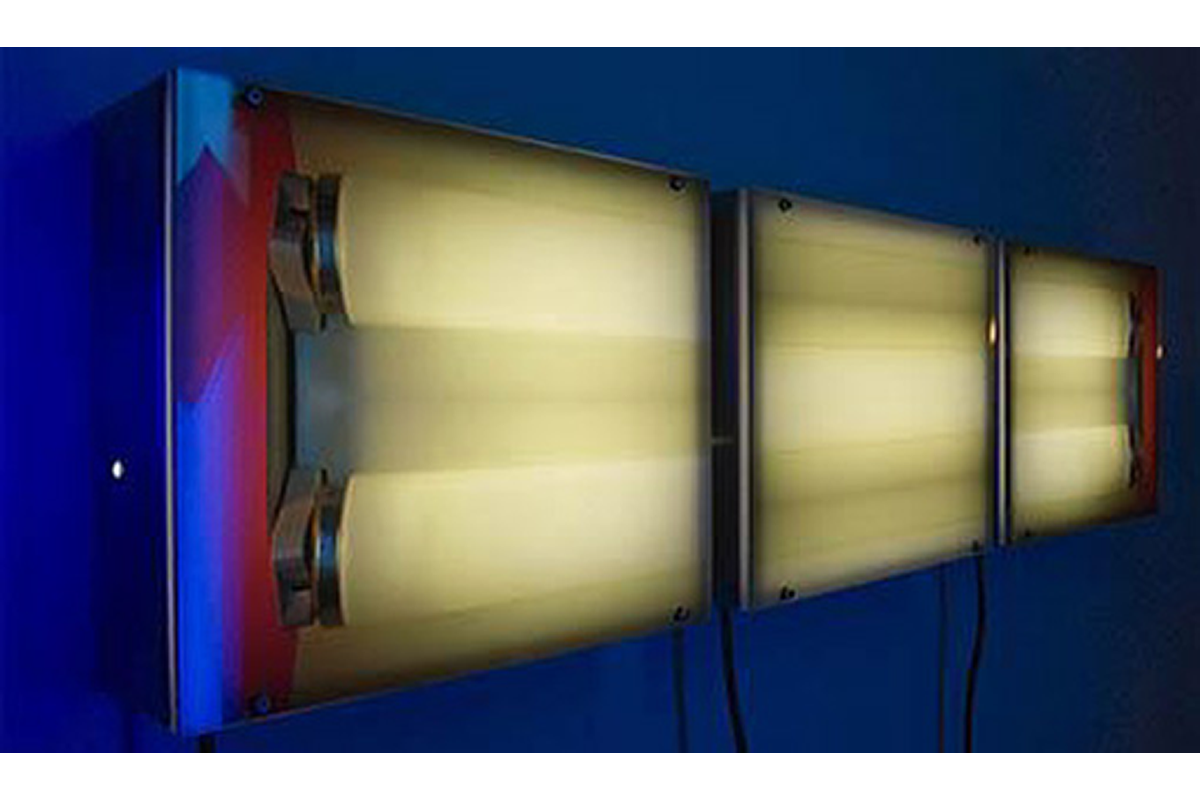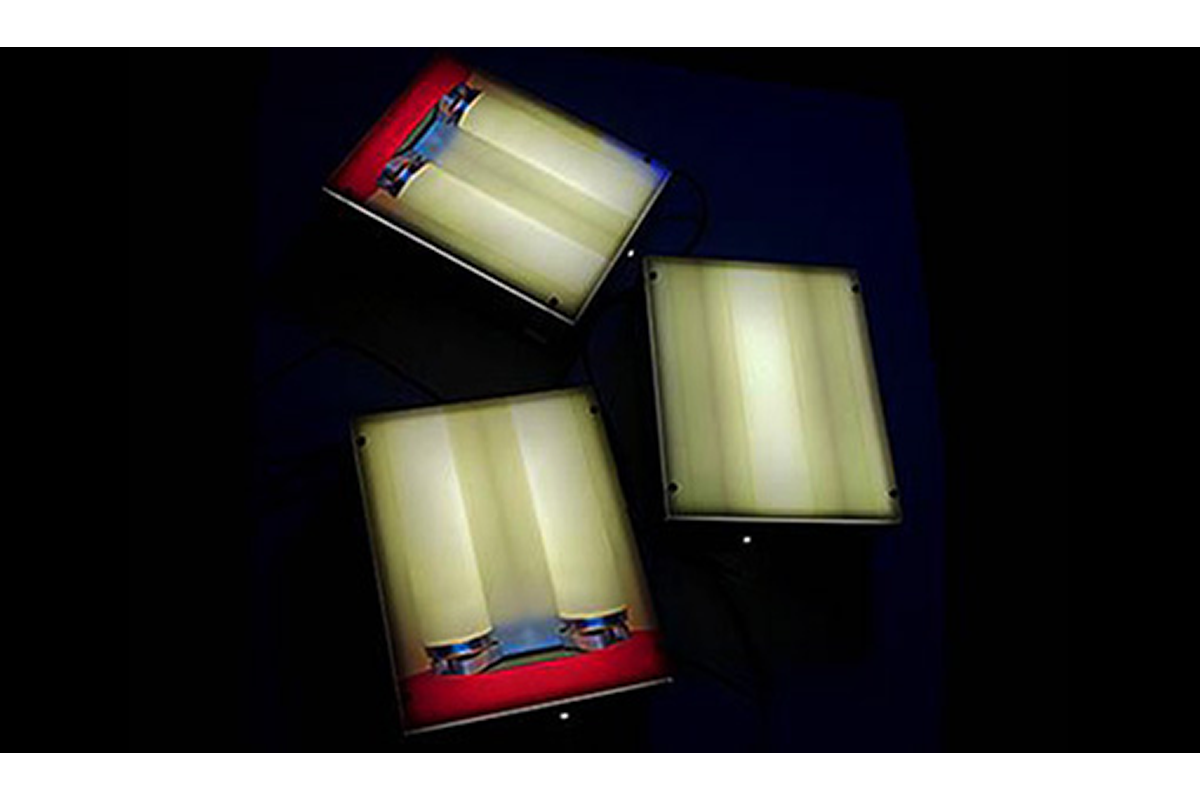Fluorescent
Medium: Light Boxes. Three Duratrance Prints sandwiched between Plexiglas and backlit. Engraved signature on the back.
Dimensions: H 10" W 39" D 3"
Soil Auction
Greg Kucera Gallery
Seattle, Washington
11.12.06
Fluorescent
Summary
Two linear fluorescent tubes are photographed and assembled to be seen as combinations of two, three and five linear fluorescent tubes depending on how one counts them, and curiously these numbers are the first three in the famous Fibonacci series. Fluorescent is one of a series of small-modified light boxes. The photograph plays a pun with the light box's own fluorescent tubes inside the boxes. Object alienated from their original context, become void of referential connotations. The modified object thus becomes a pretext to observe one's own mind to move from one to more than one possible meaning, depending on how one reads it.
Project Description
I.
In his Theory of Forms, Plato argues that every thing that we perceive with our senses is a copy or shadow of a Form, an abstract, independent reality we can know but not perceive. Particular objects may "participate" in a Form, but they remain separate from it. He illustrates this theory with his Allegory of the Cave, in which people who are immobilized by chains perceive only echoes and a world of shadows cast on a wall in front of them by a fire shining on objects behind them. Only if they were released could they turn around to see the real objects, and only if they could manage to climb out of the cave would they see the true light of the sun. If they were to do that, they would obtain knowledge of true Forms outside of their perception and immediate situation.
II.
Enter Fluorescent.
At first glance we see fluorescent lamps and light, and for a moment the lamps in the images appear to be the cause of the light. Quickly we adjust, delighted by the ingenious design, and sense the real cause of the light. We imagine lamps behind the lamps and begin to distinguish between the image of light and actual light — as if we were in Plato's cave and turned to see the cause of the shadows. Fluorescent suggests that a source of light, and light, is also a shadow. And that shadow informs us of a Form in that we rely somewhat on the images of the disjoined lamps to imagine the real lamps, just as, brilliantly, the real light combines with the image of light. Plato would say the real light is particular, and merely reflects the Form of light, and yet here its invisible source is poised between Form and particular.
III.
Fluorescent does more than merely recall Plato or act as an object lesson on the Theory of Forms. It compels us to comprehend particulars as they exist in degrees of abstraction, or degrees of reality. Instead of a hierarchy in which Forms take precedence over sensory things, and are separate from them, Fluorescent encourages us to imagine the ideal and the sensible worlds interacting and combining with one another. We see the images of the lamps more clearly because of the light shining through them, and are shown how a split image of a lamp participates with its supposed Form. At the same time, in a reversal, the images of the lamps — although in parts and partially inverted — appear across the dark gaps as never-failing models of lamps. By placing particular and abstract entities in such intimate proximity, Fluorescent shows us how close we are to the formal world.
— Thom Schramm


